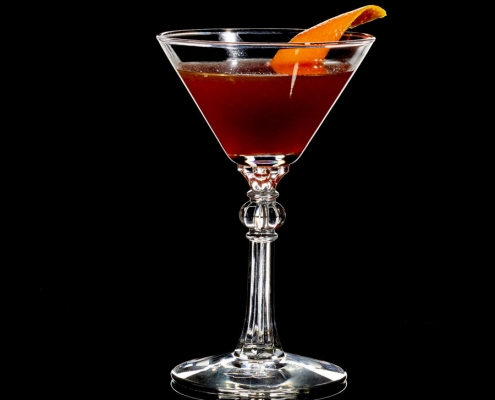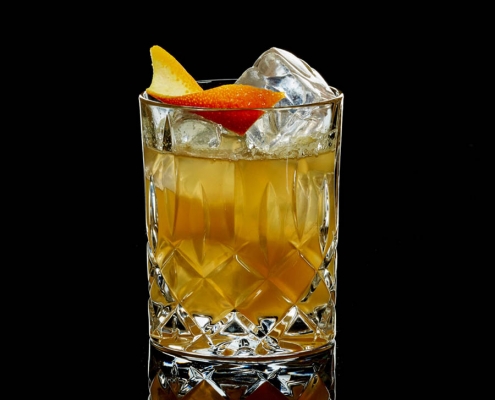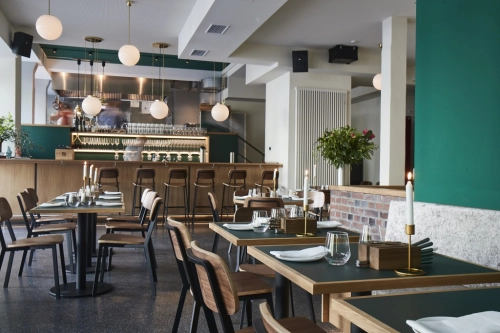The Islay whisky distilleries at a glance
Which distilleries produce the legendary Islay whisky and what makes them different? We present all nine Islay single malt whisky distilleries.
Lagavulin
Lagavulin is one of the more heavily peated single malt whiskies on Islay. The phenol content in the malt is around 35-40 ppm. Batches of 20 ppm and 50 ppm malt are blended to achieve the desired value. The malt comes from the Port Ellen malting plant.
A speciality is the double mashing - while most other Scottish single malt distilleries mash three times. The wash backs are made of pine wood and the fermentation lasts 55 hours.
The shape of the stills is also unique: the transition from the bulbous foot to the neck is smooth, with no separating bulge or reflux, reminiscent of a pear. This means that the raw spirit has little contact with the copper, resulting in a heavy style. In addition, both wash and spirit stills are almost completely filled, which further influences the character. Lagavulin operates a total of two pairs of stills.
The annual production is 2.4 million litres of New Make. A large proportion of the production is matured on the Scottish mainland, whereby mainly ex-bourbon casks are used. Sherry casks are also used. Even after 16 years, Lagavulin remains strong and heavy, with dominant peat smoke, spicy notes and seaweed - there are hardly any fruit flavours to be found here.
Lagavulin was founded in 1816. 16-year-old Lagavulin is considered one of Scotland's classics and is one of the best-selling single malts.
Caol Ila
Caol Ila is the largest of the nine Islay distilleries in terms of production volume. It can produce up to 6.5 million litres of New Make per year. A significant proportion is used for blended Scotch whiskies.
The distillery has three very voluminous pairs of stills. The phenol content of the malt is around 30-35 ppm; the malt also comes from the Port Ellen malt house. Fermentation takes 60 hours.
Like Lagavulin, Caol Ila belongs to the Diageo spirits group, which is why a large proportion of the production is stored on the Scottish mainland. Ex-bourbon casks are predominantly used for maturation; sherry casks are rather rare.
Caol Ila single malts are characterised by a drier, citrusy note. Although smoke is present, it is more restrained than in other Islay whiskies. The distillery was founded in 1846.
Bowmore
The capital of the island of Islay, with a population of around 800, is called Bowmore - after which the distillery of the same name is named. Bowmore received its licence back in 1779, making it the oldest legally operated whisky distillery on Islay.
Bowmore has been part of the Japanese drinks group Suntory since 1994. Production is carried out using two pairs of stills, which together produce around 2 million litres of New Make per year.
A speciality: Bowmore is one of the few Scottish distilleries that still partially (50 %) malt their own malt. The peat content is 25 ppm. Fermentation takes place in vats made from Douglas fir wood.
A special feature of Bowmore is the legendary No.1 warehouse, in which the whisky matures under unique climatic conditions. While many other Islay distilleries primarily use ex-bourbon casks, Bowmore uses an unusually large number of sherry casks. This gives the whisky a special depth and complexity.
Kilchoman
Kilchoman Distillery is the youngest distillery on Islay whose whisky is already available. It owns around 110 hectares of farmland on which barley is grown. This is enough for around 30 % of its own whisky production. The remaining barley comes from the Port Ellen malthouse. Kilchoman is one of the few distilleries that still malt its own whisky.
Fermentation takes an exceptionally long 90 hours. The stills are the smallest on Islay and the spirit still has a Milton Ball, which produces a lighter distillate. Many sherry casks from Bodega Miguel Martin and ex-bourbon casks from Buffalo Trace are used for maturation. Kilchoman has been producing under the management of the Wills family since 2005.
Ardbeg
Ardbeg enjoys cult status among Islay single malts. Despite several closures in the 1980s and 1990s, the distillery continues to delight its fans. Ardbeg uses malt from the Port Ellen malthouse with a high phenol content of 56 ppm. Many of its whiskies are bottled young, which keeps the peat smoke particularly intense.
Production takes place in a wash still and a spirit still with a purifier, resulting in a lighter distillate. Ardbeg produces around 1.4 million litres of New Make every year.
Bruichladdich
The Bruichladdich distillery changed hands many times and was closed in 1995. It was taken over and reopened by Murray McDavid in 2000. It has belonged to Remy Cointreau since 2012. It produces unpeated Bruichladdich, peated Port Charlotte and the extremely peated Octomore.
Bruichladdich is experimenting with different types of grain, including 100 % Islay barley. With an annual capacity of 1.6 million litres, the distillery also has a Lomond still for the production of Islay Dry Gin The Botanist.
Laphroaig
Laphroaig is known for its unique iodine flavour, which sets it apart from other Islay whiskies. Other flavours include seaweed, peat and malt. The distillery was officially founded in 1815 and is now part of Beam-Suntory. Laphroaig has three wash stills and four spirit stills and produces 2.7 million litres of New Make every year.
Ardnahoe
The newest Islay distillery, Ardnahoe, was launched in 2016 and is located between Caol Ila and Bunnahabhain. Whisky with a peat content of 40 ppm has been produced since 2019, although less peated variants are also to be produced in future. The distillery uses old-fashioned wormtubs for cooling - a rarity for a modern distillery.






